BY STANZIN PALKIT
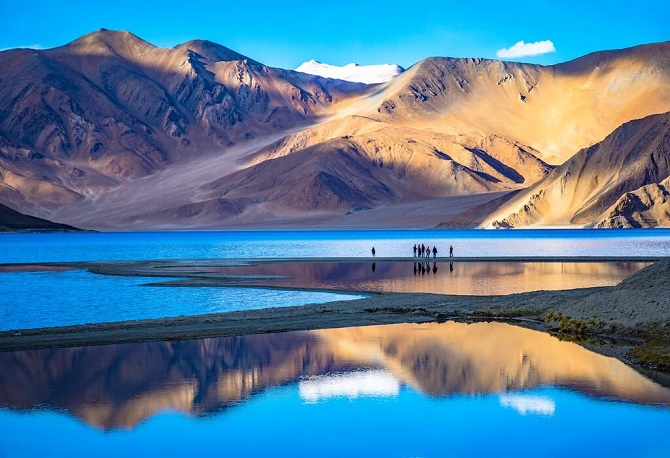
The beautiful and enchanting Lakes in Ladakh, beyond any doubt, are its biggest tourist attraction. Some of them are quite large in size and famous; while others are a bit smaller and known to only a few. Some are easily accessible whereas a few others will require you to go a bit remote and off the road.
The common factor among all these lakes, however, is that they are all stunningly beautiful. They are all charming in their own ways and present a different color each season. How many can you visit will entirely depend on the time you have in hand but if you asked me, I will recommend them all. Below is a list of lakes in Ladakh that can help you in deciding which ones you can include in your itinerary.
Pangong Lake
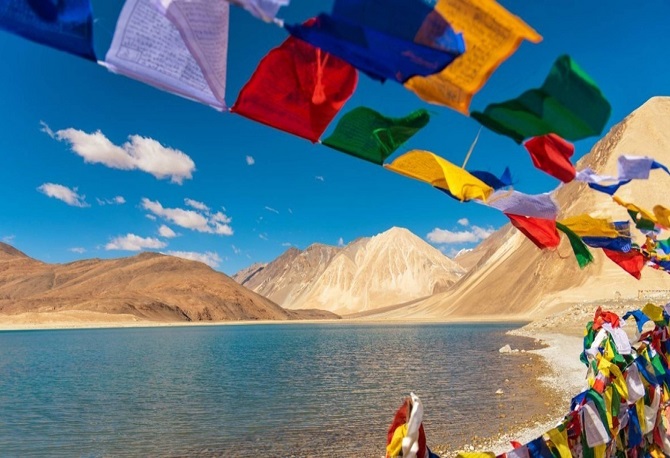
Pangong Lake is the most popular and amusingly beautiful lake of Ladakh. Another high-altitude lake that is only ⅓ of its portion in India. The rest of the lake lies in the Chinese area. With beautiful mountains on the backdrop, Pangong has a lot of naturally beautiful landscapes in the backdrop. This saltwater lake is located at an astonishing altitude of 4350 m. The lake is almost 5 km wide and a huge 134 km deep. It is believed that the lake is almost 328 feet deep.
•Location: Leh District, Ladakh
•Distance from Leh: 224 km (approximately)
•Attractions of Pangong Lake: Apart from the beautiful landscapes, it is the flora and fauna of the place that makes it an amazing place.
•Best time to visit Pangong Lake: You can visit here throughout the year. The beauty keeps intact and doesn’t change much.
Tso Moriri
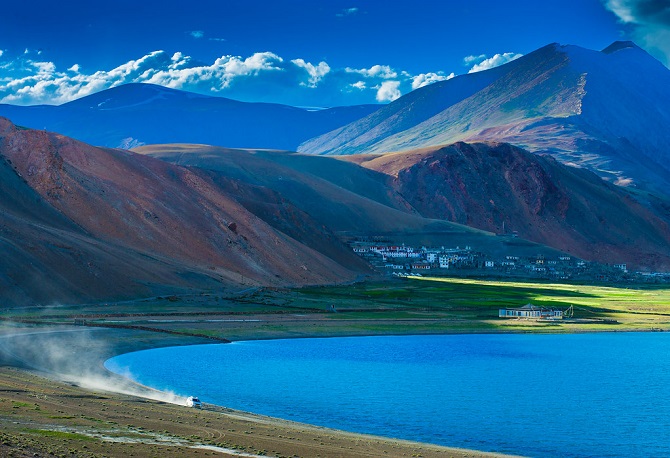
Tso Moriri is one of the best Lakes of Ladakh and probably the place that you shouldn’t miss out on at all costs. Located just about 250 km from Leh, this majestic lake is a wonderful and peaceful place. The lake is supposed to be 7 km broad and approximately 19 km long. This is a high-altitude saltwater lake and one of those that lie entirely in India. The place is a protected wetland which means you cannot camp around the lake but surely staying at an option some km away will be good enough.
•Location: Changthang Region of Ladakh
•Distance from Leh: 221 km (approximately)
Attractions of Tso Moriri
•There are almost 34 species of birds that can be spotted here and amongst these 14 are water birds.
•A 400 years old monastery lies on the western bank of the lake- Korzok Monastery.
•Shakyamuni Buddha Statue
•Korzok Gustor Festival
•The Buddhist painting by Tibetan
Best time to visit: The best time to visit Tso Moriri is during Summer and Monsoon. It means between May and September.
Tso Kar

Tso Kar is one of the offbeat attractions of Ladakh and this lake hasn’t got the much-needed attention as the other lakes mentioned above. But that’s exactly why this place is a must-visit destination for travelers. If you wish to enjoy the serenity and pristine lake, then Tso Kar can be a wonderful option.
•Location: Rupshu Valley of Ladakh
•Distance from Leh: 154 km (approximately)
•Attractions of TsoKar: Also called “The White Lake” of Ladakh; it is not the Snow that makes it white but the salt lining that has been created at the circumference. This lake is just about 50 km from Tsomoriri.
•Best time to visit: The best time to visit TsoKar is between May and September.
Yarab Tso
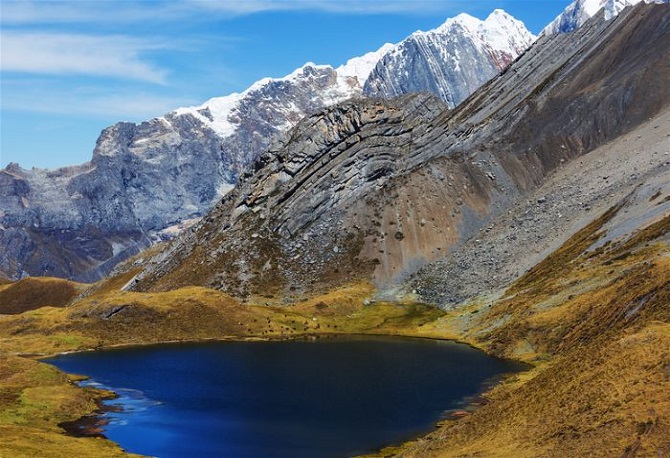
Situated in the Nubra region of Ladakh, Yarab Tso gets a lot of travelers every year. It is one of the best lakes of Ladakh due to many reasons. Be it the natural beauty it gets from the Nubra Valley or the rugged mountains that are located near the area. To reach this lake you will have to ride to the Panamik Village and then there is a trek of approximately 20 minutes up the mountain to reach here.
•Location: Panamik Village in Ladakh
•Distance from Leh: 141 km (approximately)
Attractions of Yarab Tso: Some of the finest attractions of Ladakh are located in proximity to the lake. Here they are.
•Panamik Village
•Sumur Village
•Diskit Village
•Diskit Monastery
•Cold Desert of Hunder
•Maitreya Buddha Statue in Diskit
Best time to visit: The best time to visit Tso Kar is between May and September. However, a person can visit here anytime throughout the year.
Mirpal Tso (Mitpal Tso)
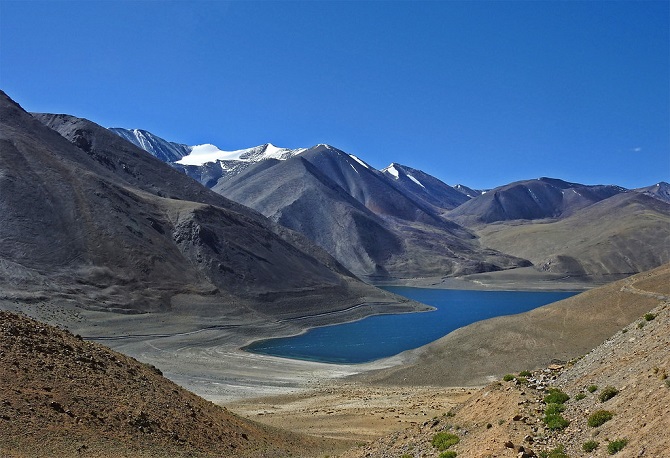
As you start driving up from Chushul towards Nyoma, the first lake you will come across is Mirpal Tso (also known as Mitpal Tso). It is located at a distance of above 28 kilometers from Chushul. The entire drive from Chushul to this lake will be a nightmare and it will only get worse as you drive further. This lake is just before the Kakasang La Pass which is a few kilometers after you cross Mirpal Tso. .
Distance from Leh: 228 kilometers
Altitude: 5,200 metres
Best time to Visit: May to September
Accommodation: None
Motorable Road: Yes (4×4 SUV)
Public Transport: No
Permits Issued: Rarely
I am not sure about the exact altitude of this lake but Kakasang La is at a height of 5,446 meters, 17,868 feet. This lake is slightly before the pass which means that its elevation would be close to 5,200 meters making this one the highest altitude lake you will cross in your entire trip.
Please know that the complete stretch from Chushul to Nyoma will require you to be traveling in a 4X4 SUV. The road is extremely bad and even with 4×4 engaged, your vehicle may still struggle to climb.
Yaya Tso
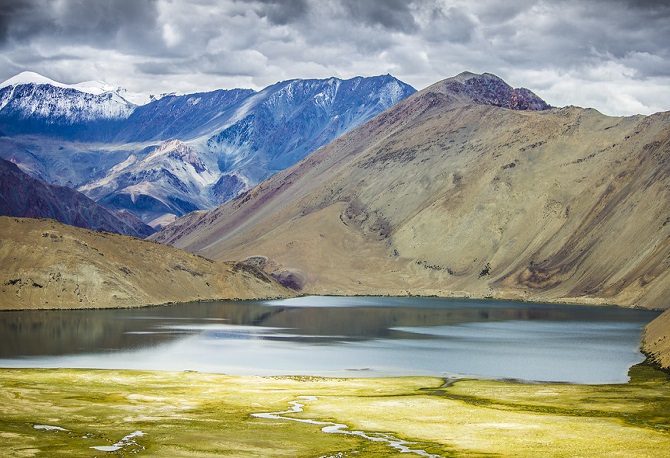
Yaya Tso is a lake in Ladakh, India. It is known as a bird’s paradise for its beautiful lake located at an altitude of 4,820 meters. It is a nesting habitat for many birds and animals, such as the black-necked crane, which is one of the highest breeding sites in India
Why in news?
•The Biodiversity Management Committee, the panchayat of Chumathang village, along with the SECURE Himalaya Project recently resolved the issue and declared Yaya Tso Lake a biodiversity heritage site.
Key facts about the Yaya Tso Lake
•Lake YayaTso is known as a bird's paradise for its beautiful lake located at an altitude of 4,820 metres in Ladakh.
•It is a nesting habitat for a large number of birds and animals, such as the bar-headed goose, black-necked crane and brahminy duck
•It is also one of the highest breeding sites of the black-necked crane in India.
What is the Secure Himalaya project?
•It is funded by the Global Environment Facility.
•It supports the government’s efforts for the conservation of snow leopard and its habitat by developing and implementing a landscape-based approach for Himalayan ecosystems, and addresses key issues of habitat degradation, threatened livelihoods and illegal trade in wildlife.
•It was launched in 2017.
Project Landscapes:
•Changthang, Ladakh Landscape, Jammu & Kashmir
•Lahaul-Pangi and Kinnaur Landscapes,
•Gangotri-Govind and Darma-Byans Landscapes,
•Khangchendzonga-upper Teesta Valley.
RIVERS
The Himalayan river systems comprise the Ganga, the Brahmaputra, and the Indus.There were rivers in the Himalayas even before the Himalayas were formed.The deep gorges of the Indus, Satluj, Brahmaputra and other rivers amply demonstrate that they predate the Himalayas.
India derives its name from the name Indus. Indus River System, a Himalayan river system, is one of the world’s largest river basins.
Around this river, “The Indus Valley Civilization” first emerged.Sindhu is another name for the Indus River. As a result, the Sindhu River System is a component of one of the world’s and the Indian subcontinent’s most fertile regions.The river passes through Pakistan, India, and China’s Tibetan areas. It is referred to as Singi Khambai or Lion’s mouth in Tibet.
The Indus River System consists of the Indus, Jhelum, Chenab, Ravi, Beas, and Satluj, and is made up of the principal tributaries of the Indus River. The Indus water pact was established in 1960 to share water because the Indus River passes through both India and Pakistan.
According to the Indus Water Treaty of 1960, the rivers Indus, Jhelum, and Chenab are under the control of Pakistan, while the rivers Rabi, Beas, and Satluj are under the control of India. Through the canal, the Indus River System also reaches Rajasthan and Haryana.
Indus River
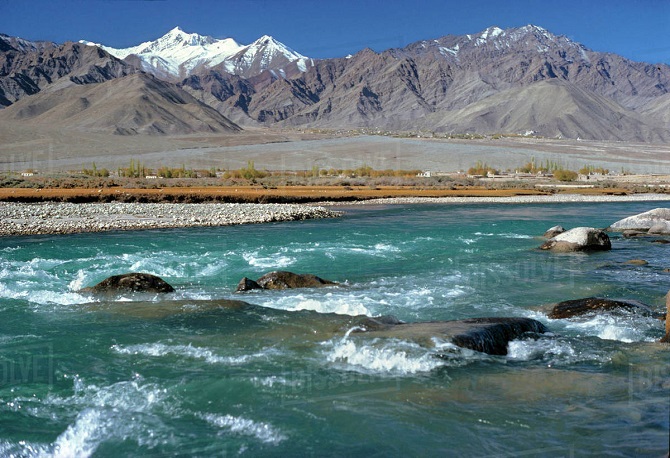
It comes from a glacier in Bokhar Chu in the Tibetan area, located at an elevation of 4,164 m, in the Kailash Mountain range close to Mansarovar Lake.
The river originates in an area called Demchok and runs northwest before joining the Ladakh region of India. The Indus River flows between the Ladakh and Karakoram ranges but is more closely situated to the latter.
The other Himalayan tributaries of the Indus include Gilgit, Garstang, Dras, Shiger, and Hunza. After passing through Gilgit, the river makes a southerly bend before turning west and entering Khyber Pakhtunkhawa, Pakistan’s northwest frontier province.
The collected waters of the five eastern tributaries—the Jhelum, the Chenab, the Ravi, the Beas, and the Satluj—arrive at the Indus from Panjnad (Panchnad) just before Mithankot.Its principal left-bank tributaries include the Zaskar River, Suru River, Soan River, Jhelum River, Chenab River, Ravi River, Beas River, Satluj River, and Panjnad River.Its principal right-bank tributaries include the Shyok River, Gilgit River, Hunza River, Swat River, Kunnar River, Kurram River, Gomal River, and Kabul River.
SHYOK RIVER
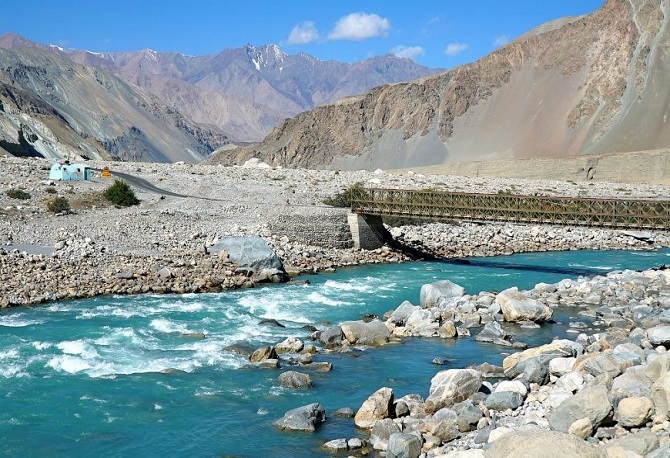
The most important feature of the Shyok River is that it originates in the high altitudes of the Rimo Glacier and flows in a south-eastern direction joining the Pangong range. Subsequently, it takes a northwestern turn flowing parallel to its previous path.A trip along the Shyok River would be an interesting one. The water is clear and the scenery breathtaking. Tourists and adventure enthusiasts worldwide visit the Shyok river to explore the beautiful scenery and experience the rich, colorful culture of the people of the Shyok valley. When visiting the area, you can also plan trekking in Shyok valley. A road trip towards the Shyok river in Ladakh is thrilling and highly enjoyable if you have planned it well. If you are reading this article to know about the Shyok river in Ladakh, then you are at the right place. This article will provide you with all the required information about the Shyok river.
-The Shyok river originates at the Rimo Glacier, one of the tongues of Siachen Glacier, and flows along the Karakoram Range.
-Shyok river widens at the confluence before Diskit village with the Nubra River, its main right bank tributary.
-It turns into a narrow canyon near Yagulung, flowing through Bogdang, Turtuk, Tyakshi, and then enters Baltistan.
-The river joins the Indus at Keris, east of the town of Skardu.
-The Shyok river has significant importance in the deposition of the Quaternary sediments—a treasure for Quaternary geology researchers.
-The origin of the river is famous for the distinction of being the highest battlefield in the World.
The Shyok river valley
-The Shok River serves as a vital source of freshwater for the many ethnic groups that dwell in the Shyok Valley.
-Shyok Valley is the valley of the Shyok River situated in Ladakh and is close to the Nubra Valley.
-Shyok Valley is located at an elevation of 10,500ft.
-Khardung La on the Ladakh Range lies north of Leh and is the gateway to the Shyok and Nubra valleys.The Siachen Glacier lies partially near the end of the valley
